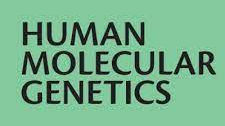BRIEF DESCRIPTION
Retinitis pigmentosa type 17 (RP17) is a hereditary eye disease that causes gradual vision loss. RP17 is a form of dominantly inherited retinitis pigmentosa caused by pathogenic structural abnormalities affecting the chr17q22 region. The genetic cause of RP17 was only recently discovered, yet already over 300 affected individuals have been genetically diagnosed with this disease.
Symptoms include decreased visual acuity, visual field constriction, and night blindness. Many people with RP17 retain central vision until their sixth or seventh decade of life. RP17 is caused by a DNA duplication on chromosome 17q22. The duplication contains the genetic code for several genes. RP17 can onset as early as age 15, but the mean age of onset is between 20 and 30 years. At present, there's no treatment for RP, but low vision aids, rehabilitation programs, and vitamins and supplements can help some types of RP.
RP doesn't follow a set schedule of progression because there are many different genes that can be involved. Different types of RP progress differently in different people.















